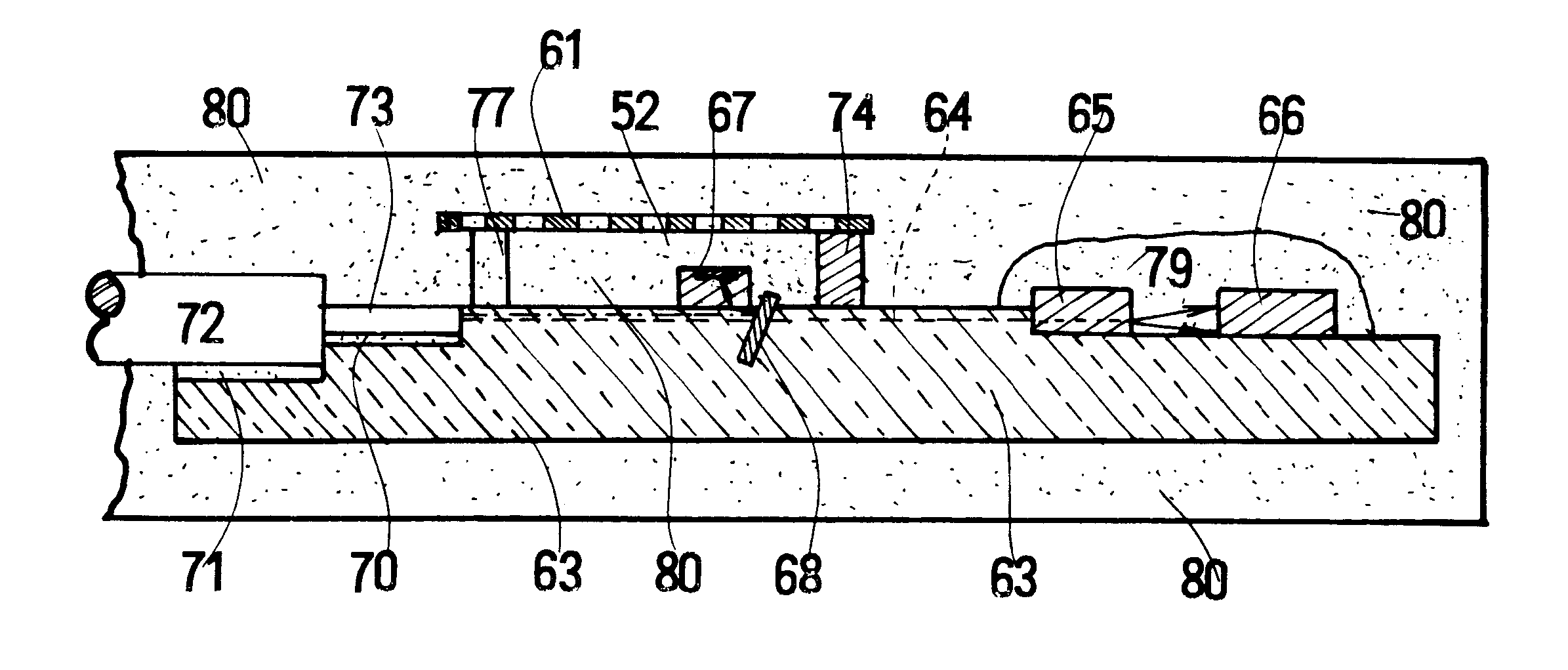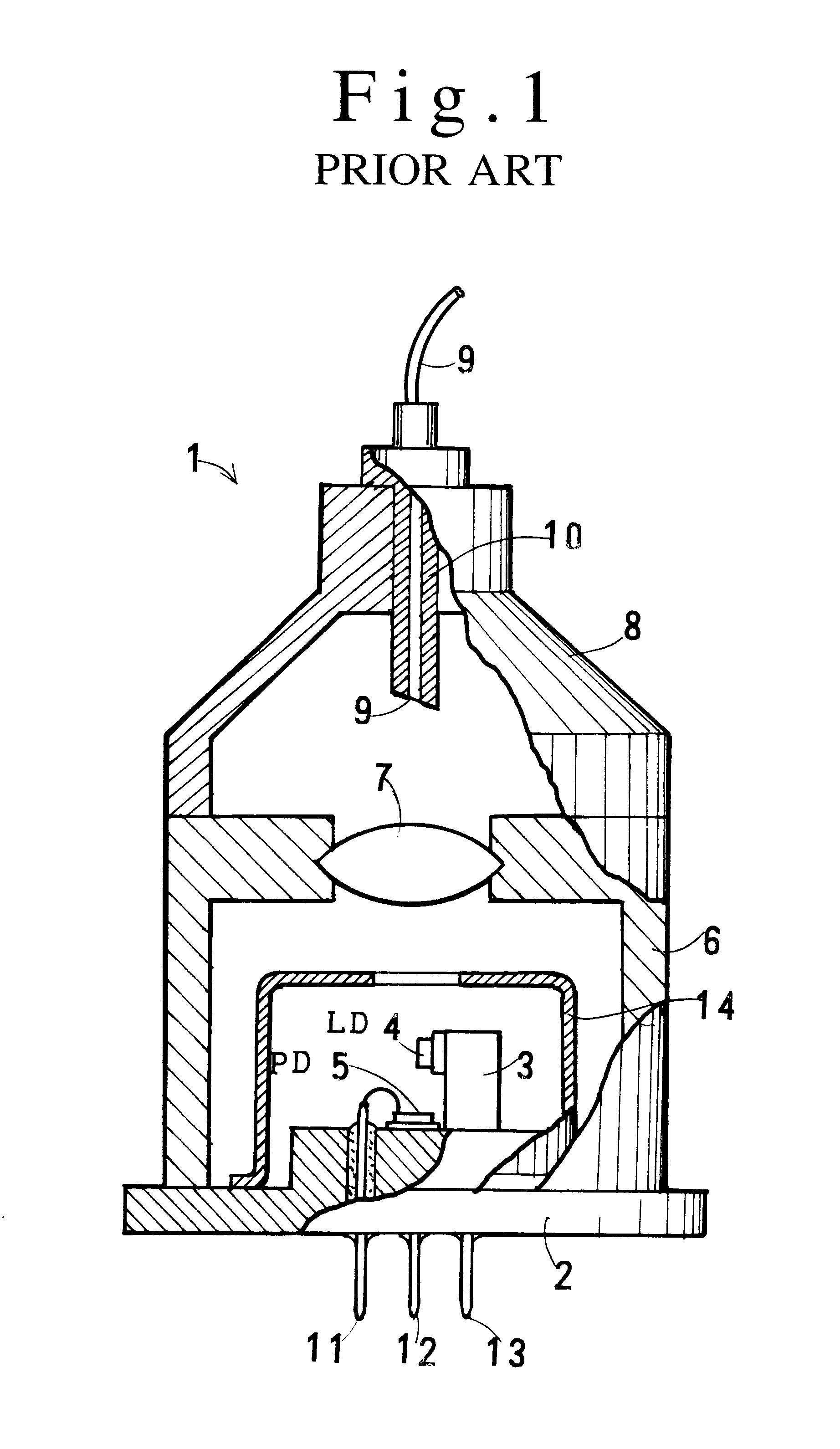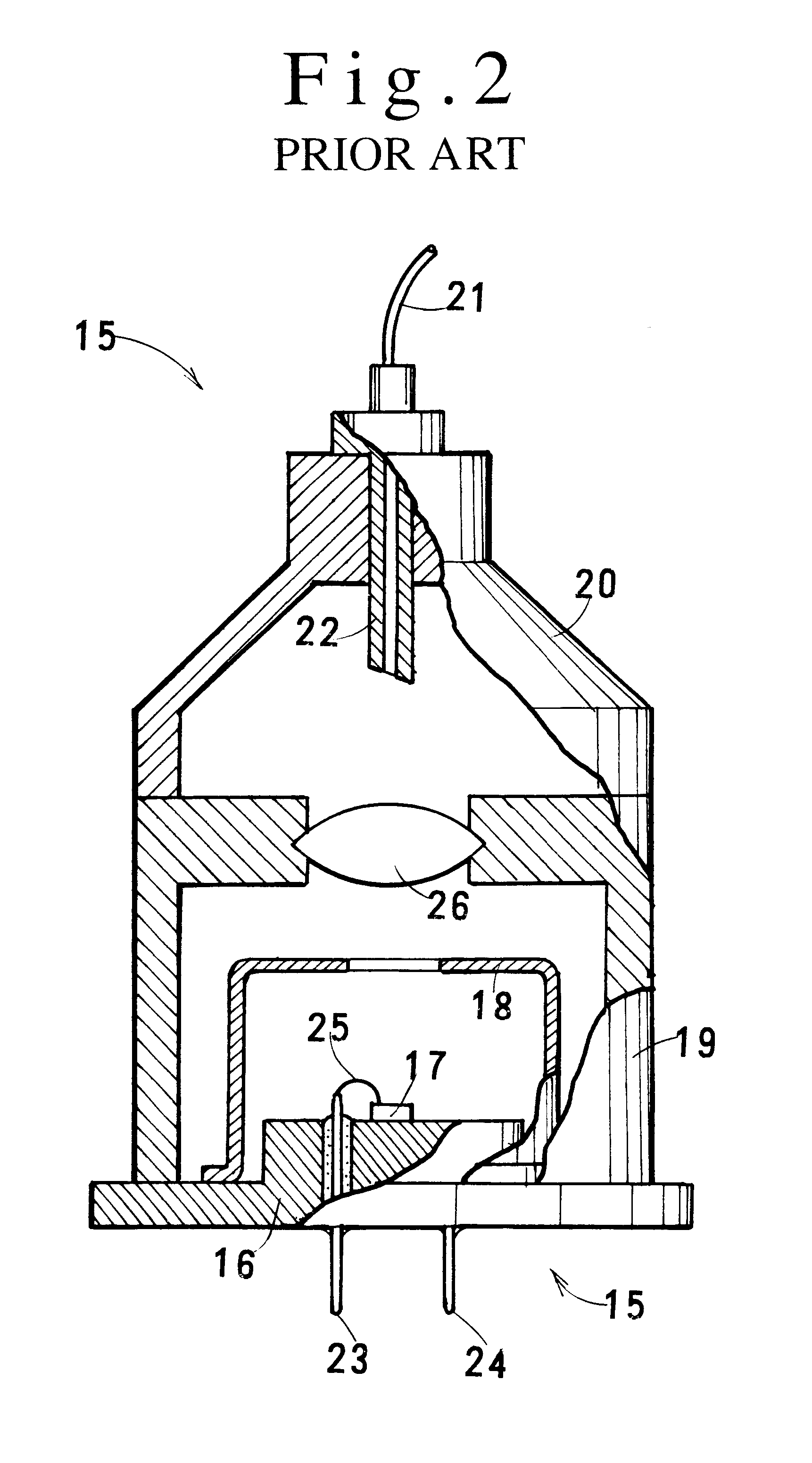Light transmitting/receiving module
a light transmitting/receiving module and light transmitting technology, applied in the direction of instruments, semiconductor lasers, optical elements, etc., can solve the problems of bringing the transmission signal to the reception port as noise, the reception part has a high impedance, and the external noise of the reception por
- Summary
- Abstract
- Description
- Claims
- Application Information
AI Technical Summary
Problems solved by technology
Method used
Image
Examples
embodiment 1 (
[Embodiment 1 (Y-branch Waveguide)]
FIG. 5 to FIG. 11 demonstrate embodiment 1 having a silicon bench (platform) with a Y-branch waveguide. FIG. 5 shows a design of locations of parts on the silicon bench 42. The silicon bench 42 is prepared by making a transparent silicon dioxide (SiO.sub.2) layer upon a silicon crystal substrate by a sputtering method or an oxidization method. Doping the SiO.sub.2 layer with a dopant for raising the refractive index makes a straight waveguide 43 and a bent waveguide 44 on the Si bench 42. The adjacent parts of the waveguides form a WDM (wavelength division multiplexer: waveguide type optical coupler) 45. Aiming at the simultaneous transmission, this invention employs two different wavelengths .lambda.1 and .lambda.2. The WDM 45 has the wavelength selectivity of selecting either .lambda.1 or .lambda.2 for propagating in the waveguide 43 or 44. Metallized patterns (not shown in the figures), for example, an LD ground pattern, a PD / AMP ground pattern ...
embodiment 2
employs a straight waveguide, a WDM filter and an upward branch. FIG. 13 to FIG. 15 denote The WDM for dividing light signals into the 1.3 .mu.m and the 1.55 .mu.m is realized by a dielectric multilayer filter. FIG. 13 shows a plan view of the waveguide, devices arranged upon a silicon bench 63. The silicon bench (platform) 63 is a rectangular SiO.sub.2 (001) single crystal. The Si bench has two steps at the front part, a step at the rear part and a plateau in the middle.
The straight waveguide 64 is made in a longitudinal direction on the plateau. The device features the alignment of a PD 67 and an LD 65 along the straight waveguide 64. The LD 65 is mounted on the rear step facing directly the end of the waveguide 64. The height of the waveguide 64 coincides with the height of the emission stripe of the LD 65. A monitoring PD 66 is fixed on the rear step on an extension of the waveguide 64 for sensing the power of the LD 65. The forward-emitted light from the LD 65 propagates in th...
PUM
 Login to View More
Login to View More Abstract
Description
Claims
Application Information
 Login to View More
Login to View More - R&D
- Intellectual Property
- Life Sciences
- Materials
- Tech Scout
- Unparalleled Data Quality
- Higher Quality Content
- 60% Fewer Hallucinations
Browse by: Latest US Patents, China's latest patents, Technical Efficacy Thesaurus, Application Domain, Technology Topic, Popular Technical Reports.
© 2025 PatSnap. All rights reserved.Legal|Privacy policy|Modern Slavery Act Transparency Statement|Sitemap|About US| Contact US: help@patsnap.com



